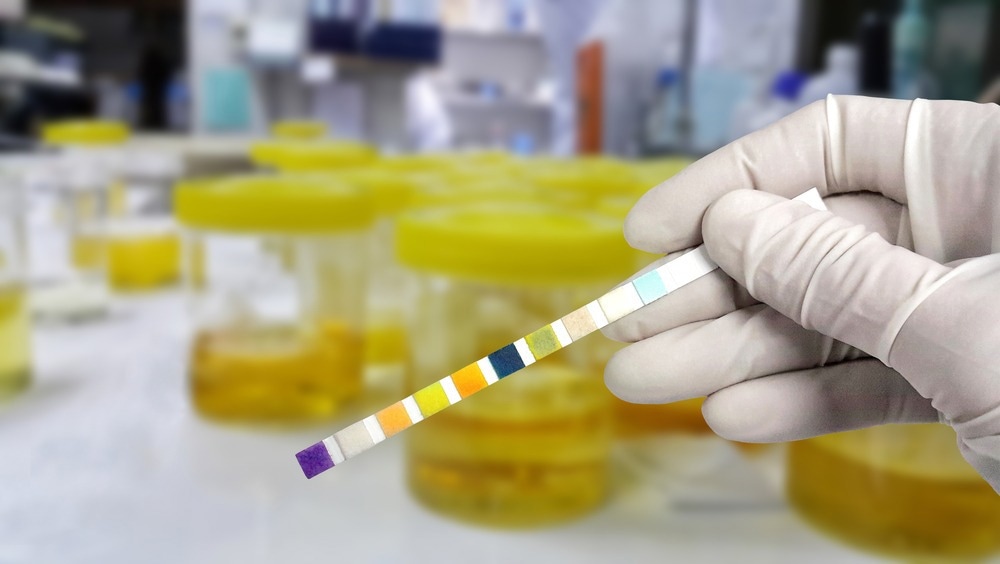A recent study published in Diseases highlights matrix-assisted laser desorption ionization time of flight mass spectrometry (MALDI-TOF MS) for discovering bacterial isolates from community patient urine samples and testing the isolated germs for antibiotic susceptibility.

Study: MALDI-TOF MS for Rapid Analysis of Bacterial Pathogens Causing Urinary Tract Infections in the Riyadh Region. Image Credit: Chamaiporn Naprom/Shutterstock.com
Urinary Tract Infections (UTIs): The Most Common Bacterial Infection
Antimicrobial analysis and choosing an appropriate antibiotic based on the type of bacteria being treated are essential for successfully controlling bacterial diseases.
Urinary tract infections (UTIs) are the most prevalent community and hospital-acquired infections affecting over 150 million people annually.
Every third female has at least one UTI episode that requires antibiotic treatment by the age of 24. Gram-negative bacteria are the most frequently discovered pathogens in 75% to 90% of UTI cases.
A total of 80% of community-based UTI infections have been associated with uropathogenic Escherichia coli (UPEC), followed by P. mirabilis, K. pneumonia, and P. aeruginosa. Nosocomial infections have also been linked to the diseases above. Bacteria that cause UTIs are regarded as the second most common infection experienced by people.
Females are much more likely than males to have UTIs. More than half of all females experience a UTI at some point in their lifetime. Symptoms, urine dipstick, laboratory tests, microscopy, urine analysis, and Gram staining are the mainstays of UTI diagnosis. The fact that uropathogens must first amplify (grow) on agar is a significant limitation of identifying uropathogens by these traditional procedures.
Limitations of Current Bacterial Diagnosis Techniques
Effective treatment and surveillance of nosocomial/community infections depend critically on identifying and accurately diagnosing the contributing bacteria.
Phenotypic traits such as Gram stain, colony shape, growth on various nutrient mediums, and other biochemical assays are the basis for identification and classification in clinical laboratories.
Clinical laboratories have embraced molecular biology tools in recent years, including RNA gene sequencing, PCR-based methods, and biosensors to facilitate rapid and accurate identification of a specific pathogen involved in UTIs.
Such procedures are time-consuming. Accurate result interpretation calls for qualified technicians. However, due to complicated procedures and high costs, biological solutions are not always practical.
Standard biochemical and phenotypic techniques such as culture and gram staining are crucial for a clinical microbiology laboratory.
The gold standard for identifying a UTI patient still relies on the culture procedure for urine samples. However, it takes between 18 and 36 hours to identify the bacteria and prescribe a medication to treat the UTI after the latter surgery.
Potential of MALDI-TOF MS in Bacterial Pathogen Analysis
Recently developed clinical diagnostic microbiology applications of MALDI-TOF MS technology demonstrate a reliable, inventive, and accurate instrument for rapidly identifying microorganisms.
MALDI-TOF MS is a practical, quick, simple-to-use, and relatively inexpensive technique for bacterial identification compared to traditional approaches.
The technique saves time for precise medication for a critically ill patient. Many researchers have used a direct identification (without culture) approach for urine samples to use MALDI-TOF MS and obtain findings more quickly.
MALDI-TOF-MS is a routine procedure in many laboratories and can detect germs in urine in less than 15 minutes, even at bacterial counts as low as 103 CFU.
Development of MALDI-TOF-MS for Analysis of Bacterial Pathogens
MALDI-TOF-MS reduces the burden on medical laboratories and the public healthcare system by quickly identifying infectious organisms. This technology speeds up the selection of the best antibiotic treatment for patients, minimizing potential side effects brought on by a slow clearance of germs.
The crucial role of MALDI-TOF-MS has received little recognition in the Middle East, particularly in Saudi Arabia. Anwer et al. used MALDI-TOF MS as a novel analysis approach in addition to conventional microbiological procedures to identify the bacteria causing urinary tract infections (UTIs). The researchers used the multi-locus sequence to investigate the genetic diversity and relatedness of all the E. coli isolates found in the current investigation.
Research Findings
The current investigation found that pathogenic bacteria were prevalent in urine samples at a high rate (25,7%), leading to UTIs for which most regularly prescribed medicines were ineffective.
The two most typical bacterial isolates were E. coli and K. pneumonia.
For Gram-negative isolates, tobramycin, gentamycin, amikacin, and nitrofurantoin had the lowest resistance rates. On the other hand, cotrimoxazole, erythromycin, and tetracycline all showed substantial levels of resistance.
The most frequent bacterium found in urine samples was K. pneumonia (16.6%), followed by E. coli (72.2%). All of the isolates aside from Enterococcus faecalis were erythromycin resistant. 61.5% of isolates were tetracycline and cotrimoxazole resistant. By using indirect culture methods and MALDI-TOF MS, it was possible to reliably identify bacteria from urine samples. Such local surveillance is strongly advised for monitoring empirical therapy and assessing the extent of resistance in isolates. As a result, it is essential to monitor resistance mechanisms and implement good stewardship practices.
Reference
Anwer, R., Darami, H., Almarri, F. K., Albogami, M. A., & Alahaydib, F. (2022) MALDI-TOF MS for Rapid Analysis of Bacterial Pathogens Causing Urinary Tract Infections in the Riyadh Region. Diseases, 10(4), Article 4. https://www.mdpi.com/2079-9721/10/4/78
Disclaimer: The views expressed here are those of the author expressed in their private capacity and do not necessarily represent the views of AZoM.com Limited T/A AZoNetwork the owner and operator of this website. This disclaimer forms part of the Terms and conditions of use of this website.